The arthrosis of the knee joint is a slowly progressive inflammatory-deigenerative joint disease. Most often, this ailment is observed in middle and elderly people and is the most common cause of skeletal-muscular pain in the zone of the knee joint and disability. From this publication you will learn how to treat arthrosis of the knee joint.
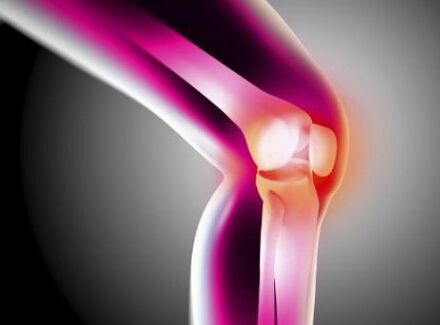
General description
In the knee joint, the femur and tibia are covered with joint cartilage. There is also a second type of cartilage fabric, forming the so -called menisci, which act as layers or shock absorbers. The joint fluid adds additional protection and smoothness. Osteoarthrosis begins to develop if the cartilage that protects the bones is disturbed and damaged, as a result of which the surface of the bones is exposed, and the articular lubricant ceases to be produced in the required amount. In this case, both complete and partial loss of cartilage can be observed. This process is often isolated by a certain area in the joint, in such cases it can be caused by injury and chronic joint wear.
The deforming arthrosis of the knee joint is characterized by the process of destroying its cartilage shells. In the future, the nearest fabrics, such as ligaments and bones, may also include in the process. Gonarthrosis, or arthrosis of the knee joint, due to the loss of cartilage, is accompanied by an increase in rigidity and joint deformation. Bone spurs (osteophytes), which are a pathological growth of bones, sometimes can even be felt from the outside. The surfaces of the bones are deformed and no longer close and do not fit each other, as in healthy joints. As a result, the restriction of movements increases.
At the same time, pain occurs, which is especially strong when moving after prolonged immobility, for example, in the morning, as well as at night, which ultimately leads to a decrease in the quality of life. Stress can also provoke pain in the affected joint. An indirect sign of pathological change of cartilage is the visible narrowing of the joint cavity between the femoral and tibia in the X -ray picture.
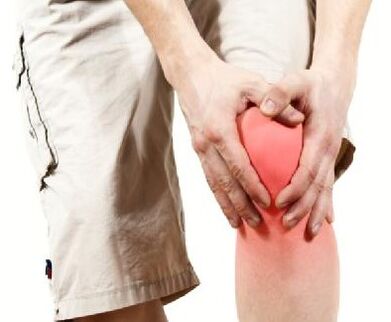
Reasons
There are several reasons for arthrosis: this is the process of aging and wear of the cartilage, overweight, injury, autoimmune diseases in which immunity attacks its own articular tissue, causing inflammation and its subsequent destruction. An example is rheumatoid arthritis, in which both joints are affected at the same time and disability develops. Some experts combine concepts such as arthrite and arthrosis of the knee joint, the symptoms of these ailments are similar and are often caused by the same reason.
A decrease in blood supply to the femoral head can also cause strain deformation, in this case they speak of aseptic necrosis. An inadequate formation of the knee joint in early childhood can lead to the displacement of the mechanical axis and degeneration of the knee joint. Post -traumatic arthrosis are secondary and develop as a result of damage to meniscuses, front or posterior cruciate ligaments.
Symptoms
There are three degrees of arthrosis of the knee joint, each of which has its own signs. At the first stage, there is a slight pain, discomfort in a sore spot and periodically emerging swelling. The second degree is accompanied by an increase in symptoms, the appearance of crunch and a limitation of mobility. When the painful sensations practically do not leave a person, and the cartilage is thoroughly destroyed, the disease goes into arthrosis of the knee of the 3rd degree.
Pain for arthrosis may appear suddenly, but most often it develops slowly. A person can notice pain in the morning, after lifting from bed. The knees can hurt when walking up the stairs, or when you have to knee, and often pain occurs just during a walk. For weather -sensitive people, weather changes can also cause joint pain.
Swelling is a consequence of inflammation, which periodically increases with arthrosis. Edema can also be associated with the formation of bone spurs or the accumulation of excess fluid in the knee. They can be more pronounced after a long period of inaction, for example, in the morning or after a long stay at the desktop. The skin can become reddish and hot when touching. If chronic inflammation of the joint occurs, the removal of pain and edema is usually achieved by taking anti -inflammatory drugs.
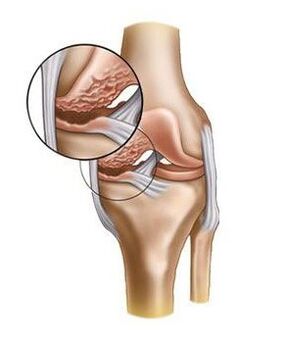
Loss of stability develops over time due to weakening of the muscles and instability of the entire system. From time to time, situations arise when a person is simply not able to bend or completely straighten his leg in the knee. Such a symptom is usually accompanied by arthrosis of the knee joint of the 2nd degree. A crunch is felt when moving because the cartilage has lost its original smoothness and the required amount of synovial lubrication. In the later stages, a creaking sound can be caused by the fact that bone spurs rub against each other when moving.
The limited range of movements can be seen when climbing the stairs or during exercise. Many are forced to resort to the help of walkers or canes to move. The deformation of the knee joint is perhaps the most terrible symptom of arthrosis, since it indicates irreversible changes in the joint, turning a person into a disabled person. The knees can be turned to each other inside, as well as outward. The deformation of the knee is barely noticeable to significant.
Diagnostics
The definition of osteoarthritis of the knee joint begins with the physical examination of the doctor, the study of the medical history and conversation with the patient. Be sure to pay attention to the doctor that most often causes pain, and tell us about cases of the disease in the family, if any.
Additional diagnosis is carried out using:
- radiography, which can show the presence of bone spurs and changes in cartilage;
- magnetic resonance imaging;
- Blood tests allow you to identify autoimmune disorders.
How to treat arthrosis of the knee joint, what drugs are needed for this? Look for answers to these questions further.
The principles of treatment
The standard treatment of such an ailment as arthrosis of the knee joint is aimed primarily at eliminating pain and removing functional restrictions. It is worth knowing that painkillers only weaken the symptoms, but are not able to affect the course of the disease and restore the damaged cartilage. For treatment, narcotic analgesics, non -steroidal anti -inflammatory drugs, slowly acting gold preparations, corticosteroids, methotrexate, etc. are used.
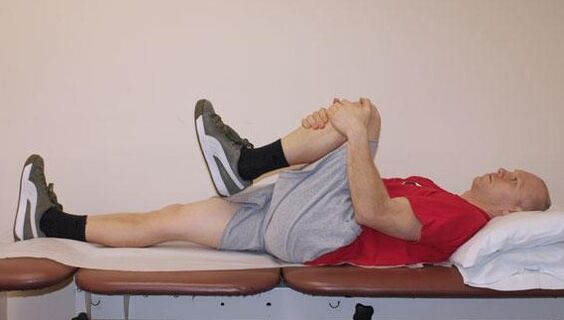
In addition, surgical intervention, as well as physiotherapy and physiotherapeutic procedures may be needed. Gymnastics with arthrosis of the knee joint significantly helps in treatment, exercises are selected by the attending physician. Despite the fact that in modern pharmacology active research and development of the most effective and at the same time safe drugs for the treatment of arthrosis are underway, most drugs still have their side effects and with prolonged use disrupt the normal functioning of systems and organs.
Treatment with drugs
The drug therapy of arthrosis of the knee joint provides for three main directions:
- the use of non -steroidal anti -inflammatory drugs that are needed in order to relieve pain and reduce the intensity of the inflammatory process in the tissues;
- Taking medications for the restoration of cartilage, which include chondroprotectors: glucosamine and chondroitin;
- The use of creams and ointments in the complex therapy of deforming arthrosis.
In combination with physiotherapy and manual therapy, taking drugs allows you to slow down the process of destruction of articular cartilage, accelerate the regeneration of cartilage tissue and restore the normal functioning of the limb.
The main goal of drug treatment is the elimination of pain, improving the nutrition of cartilage, activating recovery processes, increasing joint mobility and normalization of blood circulation in the knee.
Nesteroid drugs
The most common for the treatment of arthrosis are such non -steroidal anti -inflammatory drugs as Diclofenac, Indomethacin, Pyroxykam, Ketoprofen and others. They are used to relieve pain and reduce inflammation, but long-term treatment with these drugs is not recommended, since the drugs of this group have undesirable side effects, including the negative effect on the gastric mucosa and intestines, the effect of kidneys, liver and cardiovascular system. However, each drug has its own characteristics. And recently, funds with a minimum risk to the patient’s health have begun to be developed.
In addition, despite the need for the use of these tools, some studies found that NSAIDs are able to lead to a decrease in the production of proteoglycans, thereby dehydrating cartilage tissue, so such drugs must be taken strictly according to the doctor’s prescription and under his control. The frequency of the side effects of NSAIDs increases with their prolonged use, which acts as a necessity for many patients with arthrosis. Experts recommend choosing selective anti -inflammatory drugs for long -term use, having less side effects and do not have a negative effect on metabolism in cartilage.

Most non -steroidal anti -inflammatory drugs are produced in different forms: in the form of capsules or tablets, in the form of a solution for injections and ointments or gels for local external use.
Restoring cartilage
For nutrition and regeneration of cartilage to its tissues, the constant intake of compounds such as chondroprotectors - glucosamine and chondroitin is necessary. These are useful substances for people suffering from knee -frail osteoarthritis. Their reception should be carried out for a very long time, from six months or more, only in this case you can count on a positive therapeutic effect. Chondroprotectors improve the quality and amount of synovial fluid, unlike NSAIDs, they increase the synthesis of proteoglycans and contribute to the regeneration of the cartilage plate. However, due to such useful properties of these compounds, they should not be considered as the main treatment of arthrosis. Deforming arthrosis of the knee joint requires the use of chondroitin and glucosamine preparations for at least 1. 5 years. It is also taken into account that they are not able to restore a completely destroyed cartilage.
Ointments and creams
Treatment of a disease such as arthrosis of the knee joint should include local use of gels and ointments. These forms of dosage should not rely on as the only option for therapy, their use should be considered as the necessary addition to the reception of NSAIDs and chondroprotectors. Such drugs significantly reduce discomfort, pain, swelling, improve joint mobility.
This effect is explained by the fact that penetrating into the blood through the skin, ointments and creams improve blood circulation in the joint, accelerate metabolism in cartilage and, accordingly, its regeneration.
Compresses
Applications for osteoarthritis have a greater effect than applying ointments. For therapeutic compresses, the Dimexide tool is often prescribed, which has a good anti -inflammatory and analgesic effect, penetrates well into the tissue. Bishophyte is also effective, accelerating metabolic processes in cartilage.
Injections
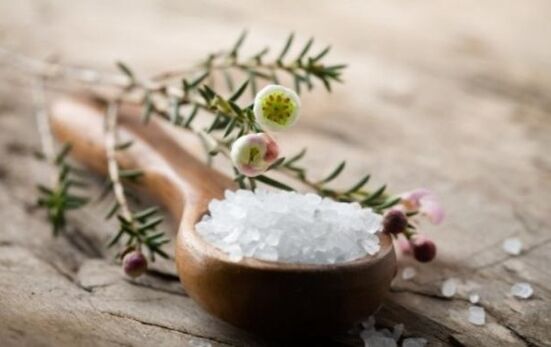
Within the knee joint, the synovial fluid is very viscous, this ensures the absence of tissue friction. An important part of this lubricant is hyaluronic acid, which binds proteoglycans to stabilize the structure of cartilage tissue. In patients with arthrosis, the level of this compound in the synovial fluid is significantly reduced, as a result of which the latter becomes less viscous, friction increases.
Injections in the knee of drugs based on hyaluronic acid can slow down the progression of osteoarthrosis, but only half of people with such a diagnosis receive symptomatic relief. The course of injections is usually three weeks, while every seven days one injection is carried out. After six months, the procedures are recommended to be repeated.
Folk remedies
Arthrosis of the knee joint provides for an integrated approach to treatment, and recipes for traditional medicine act as additional therapy. Means such as a decoction of onion husk, an infusion of dandelion leaves, a mixture of aloe, vodka and honey in equal volumes, night compresses from salt with honey and many others deserve attention. It is also recommended to eat more jelly and jelly.
Replacement of the joint
If all of the above treatment methods did not bring the result, then the operation to replace the joint with an endoprosthesis is shown. The main goal of the operation is to restore the natural mechanical axis of the leg and complete release from pain and discomfort. In this case, either part of the joint or the entire joint can be replaced. The constant improvement of surgical equipment and the quality of implants has made such a procedure quite successful and widespread.























